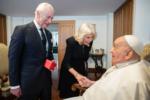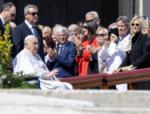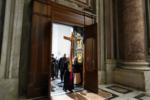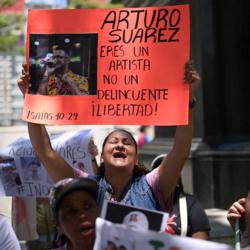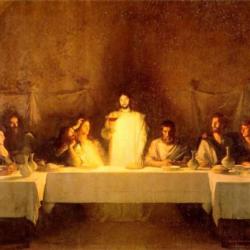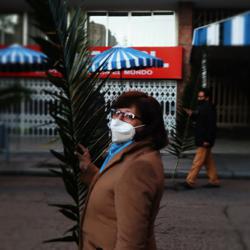The origins of the Feast of Our Lady of Mount Carmel and the scapular
The feast of Our Lady of Mount Carmel, celebrated on July 16, was first instituted in the late 14th century in commemoration of the approval of the rule of the Carmelite Order a hundred years earlier. According to legend, a religious community was established even before the time of Christ on Mount Carmel. This is the mountain overlooking the Mediterranean Sea on which the prophet Elijah successfully challenged the priests of Baal and won the people to the true God. The feast of Our Lady of Mount Carmel entered the calendar of the universal Church in the early 18th century.
Although there is no historical evidence for the pre-Christian Carmelite community, references in the 12th century record a community of monks on the holy mountain. Despite continual difficulties, the community built a monastery and church dedicated to the Virgin Mary on Mount Carmel in 1263. St. Louis, King of France, had visited Mount Carmel in 1254, and brought back six French hermits for whom he built a convent near Paris.
Mount Carmel was taken by the Muslims in 1291, and the brothers were killed and the convent burned. The spread of the Carmelites in Europe is largely attributable to the work of St. Simon Stock (1247-1265). The Carmelite Order was formally approved in 1274 at the Council of Lyon.
The Scapular of Our Lady of Mount Carmel
The Brown Scapular of Our Lady of Mount Carmel, according to the Carmelite tradition, was presented by Our Lady to St. Simon Stock, the then Father General on July 16, 1251. Our Lady gave St. Simon a scapular for the Carmelites with the following promise, saying: "Receive, My beloved son, this habit of thy order: this shall be to thee and to all Carmelites a privilege, that whosoever dies clothed in this shall never suffer eternal fire .... It shall be a sign of salvation, a protection in danger, and a pledge of peace."
Another important aspect of wearing the scapular is the Sabbatine Privilege. This concerns a promise made by Our Lady to Pope John XXII. In a papal letter he issued, he recounted a vision that he had had. He stated that the Blessed Virgin had said to him in this vision, concerning those who wear the Brown Scapular: "I, the Mother of Grace, shall descend on the Saturday after their death and whomsoever I shall find in Purgatory, I shall free, so that I may lead them to the holy mountain of life everlasting."
Many popes and saints have strongly recommended wearing the Brown Scapular to the Catholic Faithful. Pope Pius XII said: "The scapular is a practice of piety which by its very simplicity is suited to everyone, and has spread widely among the faithful of Christ to their spiritual profit." In our own times, Pope Paul VI said: "Let the faithful hold in high esteem the practices and devotions to the Blessed Virgin ... the Rosary and the Scapular of Carmel" and in another place referred to the scapular as: "so highly recommended by our illustrious predecessors."
According to Church tradition, there are three conditions necessary to participate in this privilege and share in the other spiritual benefits of the scapular: wear the Brown Scapular, observe chastity according to your state in life, and pray the rosary. In addition to the Sabbatine Privilege, enrollment in the Brown Scapular also makes a person part of the Carmelite family throughout the world. They therefore share in all of the prayers and good works of the Carmelite Orders.
In order to receive the spiritual blessings associated with the scapular, it is necessary to be formally enrolled in the Brown Scapular. The enrollment is made only once by a priest or authorized person.
The scapular stands for:
-- A commitment to follow Jesus, like Mary, the perfect model of all the disciples of Christ. This commitment finds its origin in baptism.
-- It leads into the community of Carmel, a community of religious men and women, which has existed in the Church for over eight centuries.
-- It reminds one of the example of the saints of Carmel, with whom it establishes a close bond as brothers and sisters.
-- It is an expression of the belief that the bearers of the scapular will meet God in eternal life, aided by the intercession and prayers of Mary.
The Carmelites insist that the scapular is not a magical charm to protect someone, an automatic guarantee of salvation or an excuse for not living up to the demands of the Christian life. It is instead a sign which has been approved by the Church for over seven centuries and which stands for the decision to follow Jesus like Mary; be open to God and to his will; be guided by faith, hope, and love; to pray at all times; and discover God present in all that happens around us.
